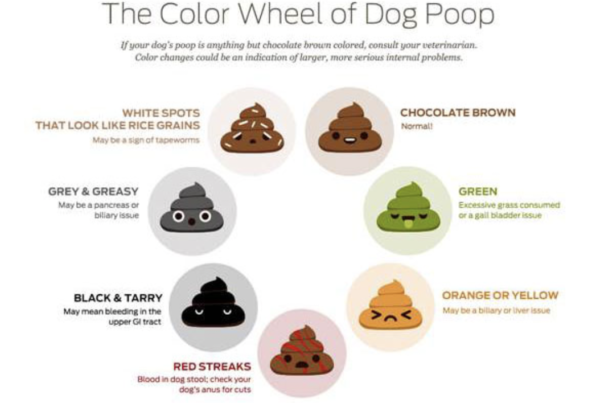Urinary tract infections are uncomfortable at best, and downright dangerous at worst. In most cases, these infections resolve with treatment and do not cause any lasting damage. In other cases, a dog’s supposed UTI symptoms could be indicative of more serious conditions, such as poisoning or cancer. Staying informed and educated about symptoms is important for any dog owner.
Key Points
- Urinary tract infections (UTI) are a painful and potentially dangerous condition in dogs.
- Bloody urine, difficulty urinating, and licking of the area are all signs your dog might have a UTI.
- Some symptoms of UTIs may, in fact, indicate something worse, like bladder cancer or kidney disease.
What Is a UTI?
As with humans, a UTI in dogs refers to an infection of the urinary tract. The most common causes of UTIs in dogs are bacterial. In fact, bacterial urinary tract infections are the most commonly occurring infectious disease in dogs, period. Bacterial UTIs affect 14 percent of all dogs throughout their lifetimes. That means the odds are comparatively high that your dog could experience a UTI at some point in their life.
Most dogs get UTIs when normal skin and gastrointestinal (GI) tract flora get past the urinary tract’s defenses. These bacteria then colonize the urinary tract, leading to an infection. E. coli is the most common bacterial cause of UTIs, but several bacteria and even some fungi can cause infections.
Some factors could increase your dog’s risk of getting a UTI. Female dogs are more likely to get UTIs than males, but male dogs may still get them. UTIs also have an increased rate of occurrence in dogs with other health problems, such as chronic kidney disease and Cushing’s disease.
Common UTI Symptoms
- Bloody and/or cloudy urine
- Straining or whimpering during urination
- Accidents in the house
- Needing to be let outside more frequently
- Licking around the urinary opening
- Fever
Sometimes, however, dogs don’t show any symptoms of a UTI at all. In these instances, your veterinarian might discover the infection while testing for other things.
For symptomatic dogs, these signs could point toward a possible UTI. However, there are some more serious conditions that your veterinarian will want to rule out first.
When UTI Symptoms Are Something Worse
Urinary tract infections are serious enough on their own. If left untreated, they can lead to dysfunction of the lower urinary tract, kidney or bladder stones, inflammation of the prostate gland, infertility, blood poisoning, and even kidney infection and kidney failure. Likewise, some symptoms could be a sign of something far more serious than even a UTI.
Bloody Urine
One of the most alarming symptoms of a UTI is blood. If you think there is blood in your dog’s urine, contact your veterinarian immediately. While this could be a sign of a UTI, it also could be a sign of the following conditions:
- Poisoning
- Kidney disease
- Trauma
- Cancer
- Stones in the urinary tract
Certain types of rodent poison can lead to platelet breakdown, which can be fatal. The faster your dog is seen by a doctor, the better their prognosis. You can also check your dog for other symptoms of anemia, such as pale gums or dark, bloody stools.
Bloody urine could also be a sign of trauma. Car accidents, dog fights, or slight injuries don’t always leave obvious signs, but there could be internal damage to your dog’s organs.
Stones in the kidney, bladder, or elsewhere in the urinary tract are painful for your dog. They may also lead to scarring and even obstruction of your dog’s urethra, which is a veterinary emergency.
Difficulty Urinating
Difficulty urinating, or an inability to urinate, is a medical emergency. It can lead to a rupture in your dog’s bladder, and if left untreated can be fatal, so make sure you call your veterinarian immediately if you notice this symptom.
There are several possible causes of difficult urination, including the following:
- Urinary tract infection
- Obstructions
- Scar tissue in the urinary tract
- Spinal cord injuries or disease
- Trauma
- Cancer
- Prostate disease
Your veterinarian is the person best equipped to deal with this dangerous situation. As with bloody urine, trauma and obstructions can be fatal if not treated, and scar tissue in the urinary tract could be the result of chronic urinary tract infections or other diseases.
Spinal cord injuries or conditions can affect the nerves that control your dog’s bladder, and trauma or degenerative diseases may require immediate treatment to keep your dog comfortable.
Prostate disease affects male dogs, especially intact males, and can be the result of infection, abscesses, trauma, or cancer.
Changes in Urination Habits
Like it or not, most of us are attuned to our dog’s elimination habits. Many of us have been caught in the act of examining our dog’s poop by non-dog owners, and the same goes for urination. This attention to detail is more than just excessive caring — it can help your veterinarian diagnose a medical condition before it gets out of hand.
Changes in your dog’s urination habits always necessitate a visit to your veterinarian. While accidents in the house could be a behavioral issue, they could also be a sign of a serious medical condition. Accidents or increased frequency in urination may be symptoms of diabetes, hypothyroidism, Cushing’s disease, cancer, trauma, or urinary tract infections, just to name a few possible conditions.
Note: If you have questions or concerns about your dog’s health or possible symptoms, be sure to contact and consult with your veterinarian right away.
Source: https://www.akc.org/expert-advice/health/noticing-dog-uti-symptoms-could-be-something-more/


